Prompts
Prompt Nodes
We need to capture user details and ask them basic questions like their Name, Email, Phone number, Date of Birthn and Numbers. Prompts are used to add such types of questions in the chatbot conversation.
If a prompt is used, the chatbot waits for user input, validates it, and moves forward in the conversation flow.
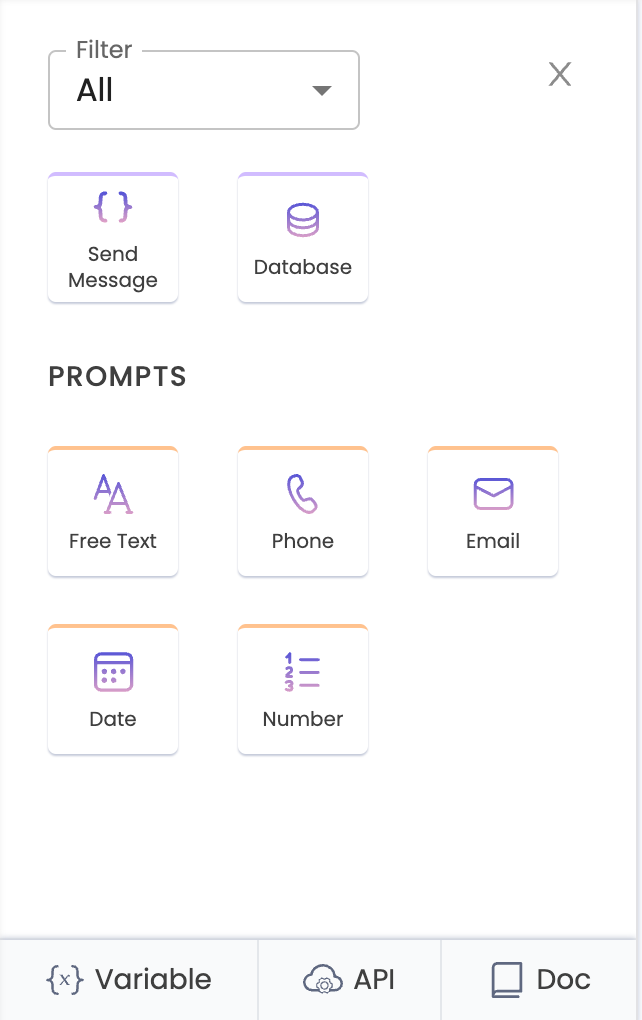
Types of Prompts
- Free Text
- Phone Number
- E-mail ID
- Date picker
- Number
When to use
- Prompts can be used to generate qualified leads.
- A regular expression (Reg-ex) can be used along with a prompt to validate user input.
For Instance: Chatbot asks the customer for their phone number to generate a lead, and they enter an invalid phone number containing characters as well. The prompt will validate the input and fallback if the input is not according to the reg-ex set. Reg-ex can be changed as per the requirements. - The behaviour of the bot can be customised if the validation of user input fails. If the validation of user input fails, the validation section helps to set the behaviour of the bot.
Limitations
- A question is mandatory to be asked in the prompt.
- Character limit of 640 characters.
Prompt’s Elements
- Question Text Box (640 Character Limit)
- Answer Validation (Field to enter a regex)
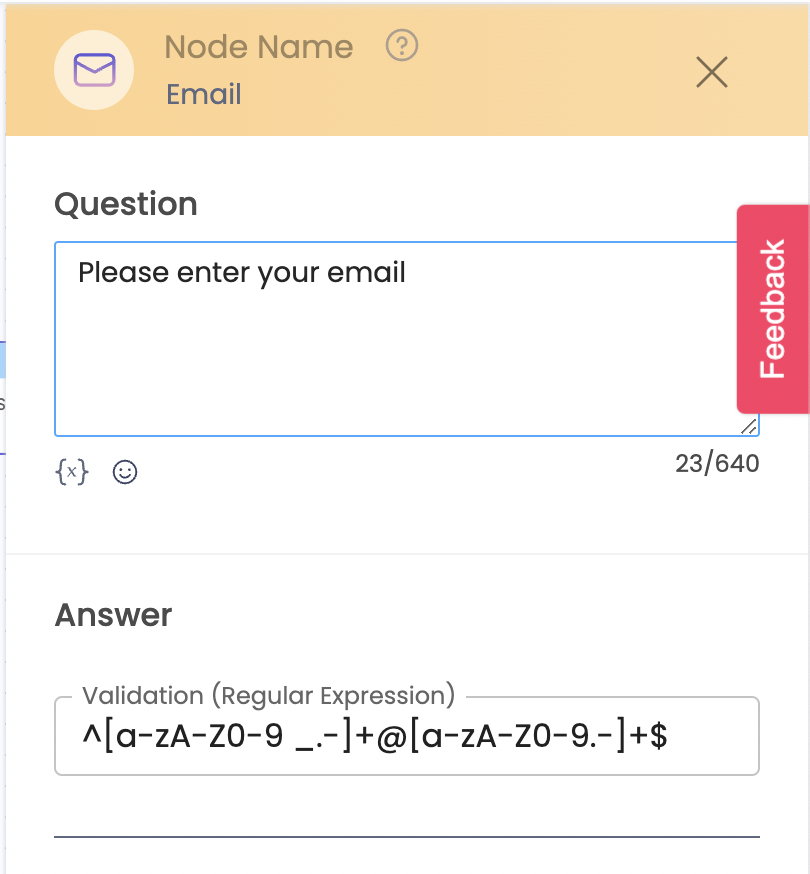
- Validation Section - This can be use to customise bot behaviour on validation failure of user input.
- Number of Retries - On Validation Failure of User Input, this dropdown specifies the number of times the Bot repeats the prompt to the user. If the number of retries is set to 0, the bot immediately proceed to the fallback connector. If the numbers of retries is set to a value between 1 and 5, the bot repeats the prompts that many times and then proceeds to fallback connector on repeated unsuccessful validation.
For instance, if the prompt is a mandatory input which is required from the user, number of retries can be set to infinite. the default value is set to 3. - Enable Failure Message - By default on validation failure the Question prompt is repeated. If there is a need to customise the prompt sent to user when user input has failed, this checkbox needs to be checked.
- Failure message - Field to enter customised failure message. (640 Character Limit)
- Number of Retries - On Validation Failure of User Input, this dropdown specifies the number of times the Bot repeats the prompt to the user. If the number of retries is set to 0, the bot immediately proceed to the fallback connector. If the numbers of retries is set to a value between 1 and 5, the bot repeats the prompts that many times and then proceeds to fallback connector on repeated unsuccessful validation.
- Store user response in a defined variable.
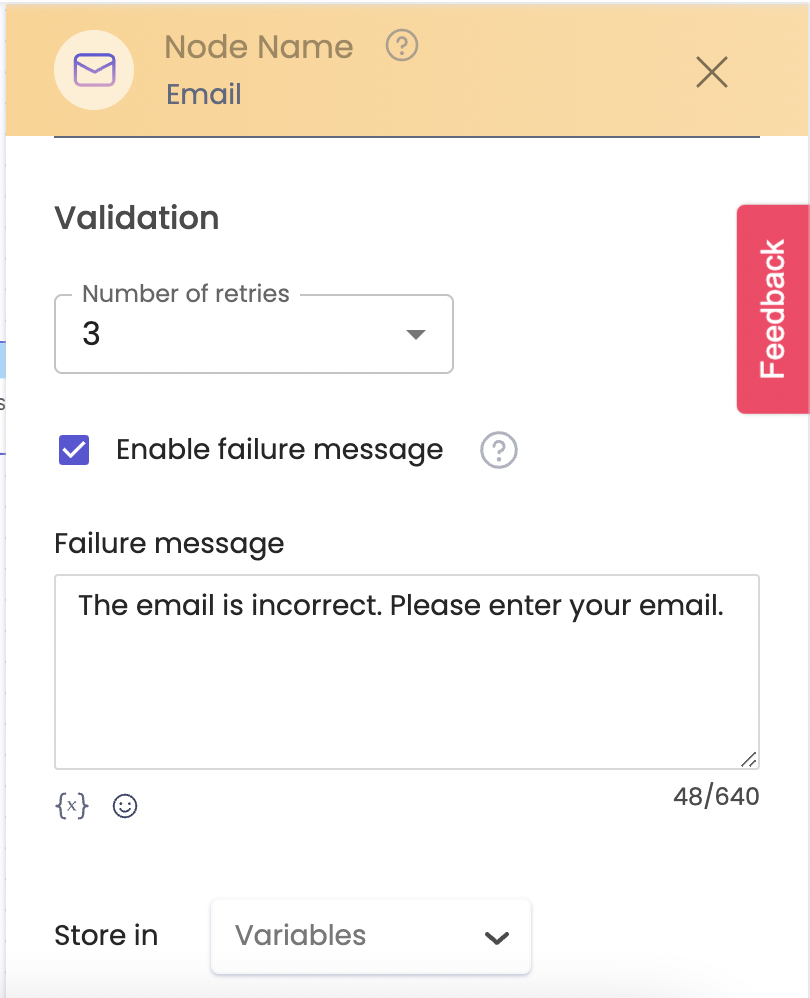
How to use
To add a prompt, you can select it from the menu on the canvas or in the prompts menu on the left-hand side panel.
Free Text Prompt
This prompt can be used to get any sort of information from the user and store the response in a variable validating it alongside any condition using a regex.
For Instance: You can collect the user name using the prompt and validate as the input should be a string and not have any numbers in it.
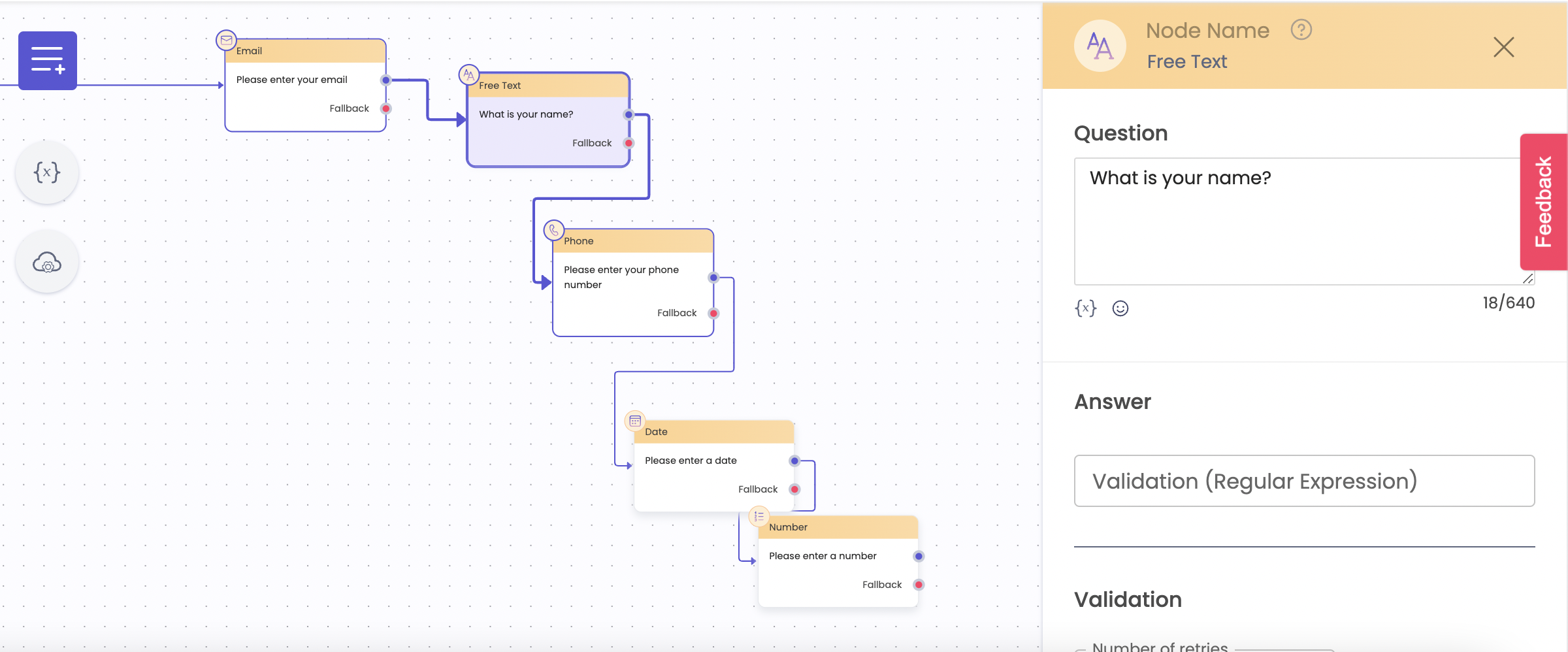
Phone Number
This prompt is used to get the user's phone number and store it in a variable after validating the input shared by the user.
For Instance: You need to capture a customer’s phone number for a Lead Generation use case. Using the Phone prompt, you can save the user response in a variable and validate it.

Email ID
This prompt is used to get the user's email ID and store it in a variable after validating the input shared by the user.
For Instance: You need to capture a customer’s email ID for a Lead Generation use case. Using the Phone prompt, you can save the user response in a variable and validate it.
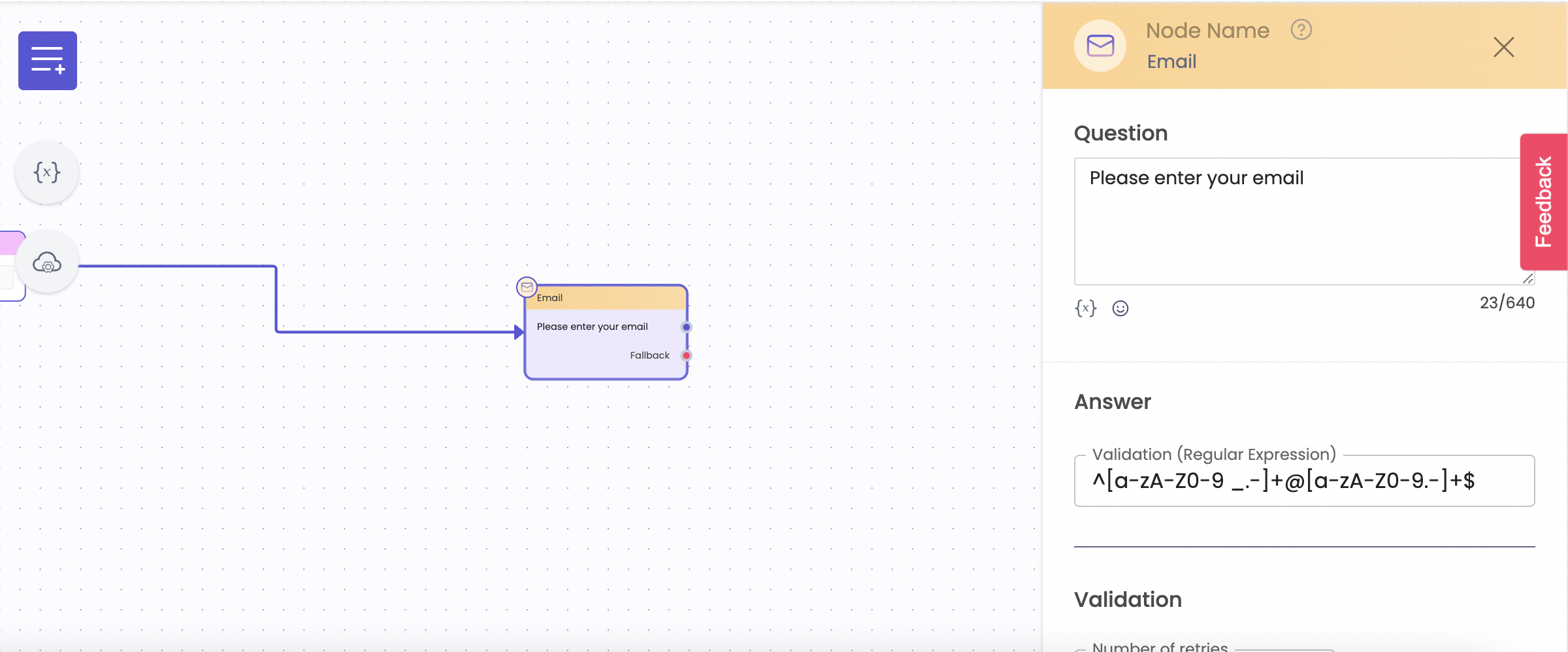
Date Prompt
This prompt is used to get a date from the user and store it in a variable after validating the input shared by the user.
For Instance: For booking an appointment, you need to capture a date. Using the Date prompt, you can validate the user response and save it in a variable.
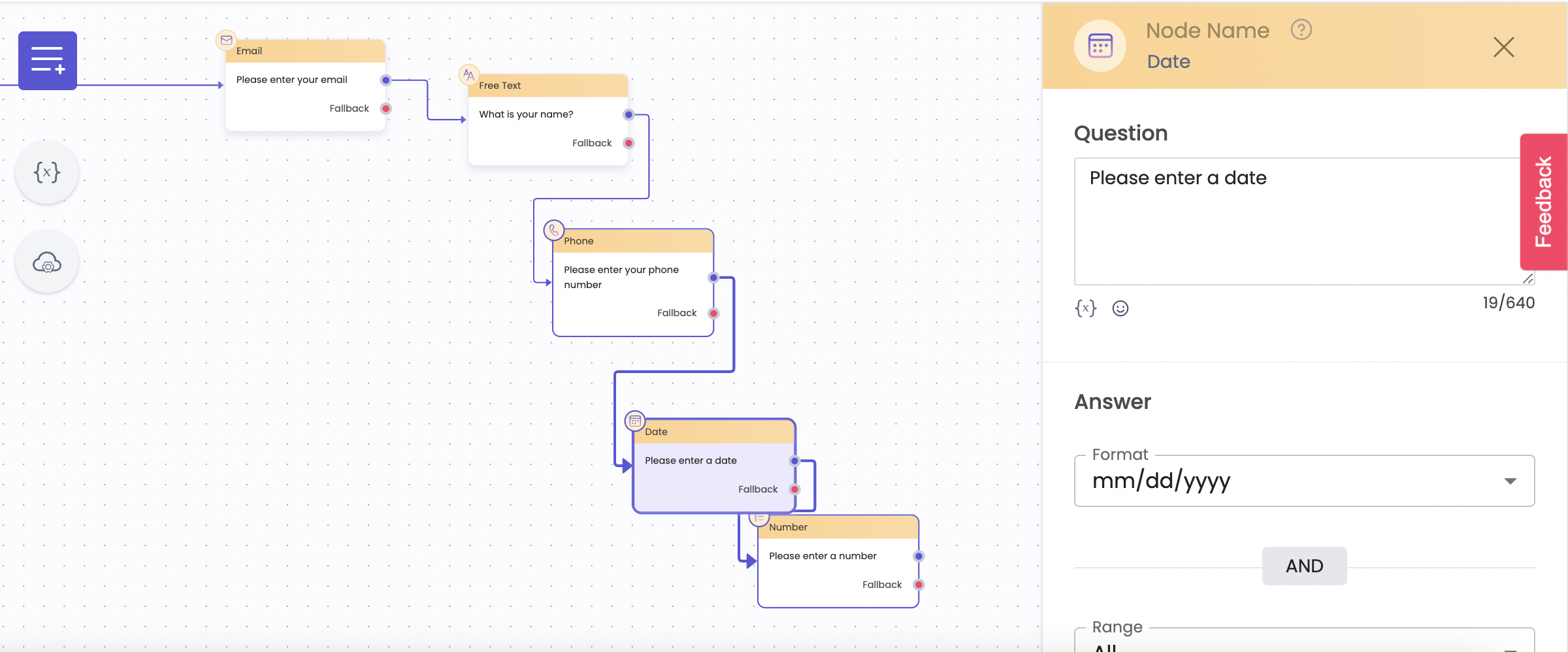
Number
The number prompt is to capture a range of values of the whole number, decimal number, or both types of numbers. The user input can be saved in a variable on the node itself.
For Instance: You need to capture a customer’s rating for a Feedback system. Using the Number prompt, you can save the user response in a variable and validate it.

Updated 2 months ago
